#Mary Anning ammonite fossils film nature
Text
Thursday 28th January 2021
Fossils. Ammonite and a woman named Mary Anning
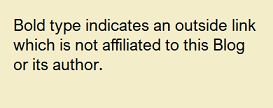
Firstly a reminder that it’s a big day tomorrow and all weekend what with the Big Garden Birdwatch running and the film ‘The Dig’ being released on Netflix. I wrote about the film Here and the BTO’s Big Garden Birdwatch too.

Nuthatch in our garden
So that’s the reminders done.
Last night on BBC’s Winterwatch they were talking about the Isle of Skye and Dinosaur hunting - evidence of not real life Jurassic Park and last Autumn there was another film about a 19th Century historical, little known, woman who make a huge difference to the study of the natural world. I read about her in a BBC article.
Kate Winslet starred, but I haven’t really heard much about it. Apparently it wasn’t styled as a biopic and contained a largely fictional account of Mary’s romantic inclinations, despite her impact being to change our understanding of life in prehistoric times
"Mary Anning was three things you didn't want to be in 19th-century Britain - she was female, working class and poor" says Anya Pearson, who is campaigning for a statue in her honour.
"This was a time when even educated women weren't allowed to own property or vote, but despite this horrendous upbringing she was able to do all these incredible things."
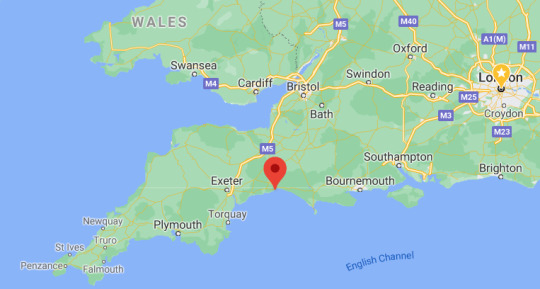
Lyme Regis: location shown by the red pin in the map
Lyme Regis, Dorset, in the south west of England, where Mary lived, was submerged 200 million years ago. This is why there are so many pre-historic fossils from underwater creatures found there. Mary often went fossil hunting after a storm because this usually caused bits of cliff to fall and for rocks to break open which made the fossil hunting easier. On the flip side of that it actually meant where the family lived was quite a dangerous location.
We’ve visited, many many years ago and had a lovely break. It’s very picturesque countryside and is also famous for the Meryl Streep film French Lieutenant’s Woman. I’ve walked along the famous Cobb, but not with such dramatic effect.

Original film poster
As you would gather from the ‘poor’ comment, Mary Anning's life was scarred by hardship and tragedy, but also quite incredibly triumphant scientific firsts. Born on 21 May 1799 she had been one of 10 children: eight of her nine siblings died before reaching adulthood.
Her father was a cabinet maker but used to scour the beach for fossils to sell and supplement his income. Mary would go out to help him and this is where he interest grew. She was only 11 when he died of TB after a serious fall. Mary carried on the sales to try and help the family survive. Although she had little formal education she could read and so schooled herself in subjects like geology and anatomy and would even dissect modern animals like fish and cuttlefish so that she could better understand the fossils she was finding.
Only a year after her father's death Mary and her brother discovered a skeleton - now known to be an Ichthyosaur - this was the event for which she’s most remembered today. This complete skeleton was around 17′ long. She regularly risked her life in her hunt for fossils, making discoveries that captured the attention of the scientific elite, even though her social status and gender meant she never received the credit she deserved.
Twelve years later, she found the first complete skeleton of a Plesiosaur, a marine reptile so bizarre that scientists thought it was a fake.
The ‘four flipper swimmer’ who ‘flew’ through the ocean.
youtube
The most fantastic find was a Plesiosaur uncovered in 1987. Its abdomen contained bones of an embryo, which proves the animal gave birth to live young.
We’re still learning.
We’ve also got to remember that at the time Mary’s family were non-conformist, t living in a very religious community. The Creation was the subject of society’s beliefs and the notion of extinction was a relatively new idea to science.
Lyme Regis Museum geologist Paddy Howe, who was a technical adviser for Ammonite (the film) describes Anning as a "very poor child who was making fantastic scientific discoveries".
"At this time, geology and palaeontology were burgeoning sciences - just coming into their own, he says. "We know about Ichthyosaur bones from the 1600s but it was the first one to be studied by scientists. It was very important."
The marine reptile was bought from Anning for £23 and later purchased by the British Museum at auction in 1819. It can still be seen at the Natural History Museum. I imagine the value today is priceless.
Make a Virtual Visit to the Museum
Despite Mary Anning's growing reputation, societal norms meant she would never be accepted into the elite scientific community. In fact, when the Geological Society met to discuss whether the plesiosaur was genuine, she was even not invited along - women were not admitted there until the 20th Century.
"If she was born in 1970, she'd be heading up a palaeontology department at Imperial or Cambridge," says David Tucker, director of Lyme Regis museum.
"But she was a commercial fossil hunter; she had to sell what she found. Therefore, the fossils tended to be credited to museums in the name of the rich man that paid for them, rather than the poor woman who found them.
"This isn't just around gender - the history of science is littered with the neglected contributions of working-class scientists."

Mary Anning: image credit the Natural History Museum
Despite her lifetime of groundbreaking work, Mary remained in hardship and died of breast cancer in 1847, aged 47. She is buried at St Michael the Archangel Church in Lyme Regis.
Following her death, Henry De la Beche, President of the Geological Society and a friend of hers, broke with the Society's members-only tradition to read a eulogy at a meeting, paying homage to her achievements.
He wrote: "I cannot close this notice of our losses by death without adverting to that of one, who though not placed among even the easier classes of society, but one who had to earn her daily bread by her labour, yet contributed by her talents and untiring researches in no small degree to our knowledge."
Three years later, a stained-glass window in her memory, paid for by members of the Geological Society, was installed in the church where she was buried. Her legacy is also marked at Lyme Regis Museum, where there is a gallery dedicated to Anning's life. In a pleasing coincidence, the museum stands on the site of her birthplace and family home.
"The fact that the museum is on the site of Mary's house was not in any way planned," Mr Tucker says. "Her family rented a part of the house which stood where we are, right on the edge of the sea.
"They were living in a house that was on the way down and prone to being hit by the huge waves and it was eventually destroyed by a storm."
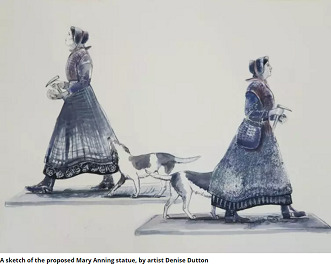
The design includes Mary’s beloved dog, Tray
More than 170 years after her death, Mary Anning's story is now taught in schools, and a campaign, supported by Sir David Attenborough and Prof Alice Roberts, is under way to erect a statue in her honour.
Evie Swire an 11 year old local schoolgirl, began campaigning for the statue, claiming there were more statues in the UK of men called John than there were of all women.
"She's done all these amazing things and sadly has been lost in history," Evie says.
"There have been a lot of forgotten women in history but all of them were educated and came from a wealthy background, but she was poor and working class," says Evie's mother and campaign trustee Anya Pearson.
"I get angry when people refer to her as 'just a fossil collector' because she had great men of learning travel across Europe to learn from her.
Two years later and the campaign is beginning to bear fruit, reaching the £70,000 stage target that means the statue can be commissioned.


I can’t say I’ve ever had a big interest in dinosaurs or fossils really. It wasn’t something the girls were ever keen on when they were small and so I didn’t get lead down that path like so many parents do these days. The closest I’ve come was finding the rabbit skull in our garden last year - and that’s not going to set the scientific community on fire now is it. Never the less, reading about some women who did have an interest and have worked on important discoveries has whetted my interest and I’ve enjoyed looking at the topics.
NOTES FROM THE KITCHEN:
I found a slightly over-looked roll of ready made puff pastry in the fridge and so with the aid of my trusty lattice roller, I shall be making a leftover-chicken and leek pie.
FUN FACT OF THE DAY:
Mary Anning is said to have been the inspiration for the tongue-twister ‘She sells sea shells by the sea shore’
0 notes
Link
youtube
Defying expectations, challenging Hollywood’s norms and facing one’s own fear of failing emerged as central themes when Michelle Pfeiffer, Kate Winslet, Rashida Jones, Vanessa Kirby and Andra Day met virtually in December for The Envelope’s Actress Roundtable. Collectively, they represent four decades in film and more wild experiences than we can fit in one discussion — and they’re also behind some of the most complex characters in film right now.
Pfeiffer is eccentric, wealthy New York widow Frances Price in the quirky drama “French Exit,” which opens this week in limited release. When Price blows through most of her inheritance, she flees to Paris, where she attracts an odd assortment of friends. Winslet is rough-hewn paleontologist Mary Anning in “Ammonite,” a period drama that explores the hardships of a female pioneer in 19th century England’s patriarchal science world and the challenges she faced hiding her love for another woman.
Jones is Laura, the dutiful daughter of an eccentric father in the comedy-drama “On the Rocks.” Despite their complicated history, daughter and father embark on a covert mission to find out if her husband is cheating, but self-discovery may just be the biggest reveal. Kirby conveys anger, sorrow and grief following the death of her newborn baby as Martha in the emotionally wrenching “Pieces of a Woman.” And singer Day makes her film debut in “The United States vs. Billie Holiday,” a period drama streaming on Hulu later this month that chronicles Holiday’s battles with law enforcement, drugs and the crush of systemic racism.
Their conversation here has been edited for length and clarity.
Your films are built around narratives of complex women, many of whom face challenges that aren’t often explored on screen. “Pieces of a Woman” is a great example of a film that is so specifically female, it would have never made it to the screen in the past.
Vanessa Kirby: It definitely feels like a different time right now ... we want to represent women that we identify as being us and the weird parts of us. In the movie, my biggest intention was to make it not a sanitized, movie version of a birth. So [she] felt super sick and burped a lot. She was really nauseous ... things that we might think are unpalatable or not comfortable. That’s all the facets of being human, and particularly being a women. I’ve read so many scripts where it was a version of a woman that I don’t know. It was a film version as opposed to my sister or my best mates or me.
Kate Winslet: That’s what is great about now ... the world is making space for all of these stories. We’ve always tried to tell these stories, but the world is more receptive to hearing them now. That is a shift.... It’s such a moving, seismic time to be doing this job.
Michelle, your character Frances Price is the perfect example of an imperfect female protaganist. She is a mess, and fantastic, and I couldn’t take my eyes off her.
Michelle Pfeiffer: I was just was so curious about this woman, and I thought she was so odd and not like a character that I had seen or that I had played. And then the dialogue is very stylized. So you have to give in to it but, at the same time, not too much. It was made up of these disparate tones of absurdism and melancholy, and it was funny, and it was tragic — these oddballs sort of living on the fringe of society and trying to make some sort of human connection, all of them, in some way.
Rashida, in “On the Rocks,” you play a reserved writer with a charming, flamboyant father. Your real father is Quincy Jones. What sort of parallels did you feel playing Laura?
Rashida Jones: I very much related to this idea of coming of age with a larger-than-life father who commands presence and changes the atmosphere of any room he walks into, and how that in itself can be something you have to untangle from. Because in order to be your own person, in order to find your life, in order to figure out who you are in the world, not relational to anybody else, you have to separate yourself from all that charm and the warm light of your father’s love. That part of it I very much related to. But Laura is unlike me in the sense that I’m pretty outspoken. This character, I think, has a lot of restraint. That was a challenge.
Andra, stepping into the shoes of Billie Holiday must have been a huge challenge, and this is your first film!
Andra Day: It was definitely terrifying. First of all, I’m a fan of hers. And I’ve always loved movies and had such a great respect for the craft of acting. My biggest terror was that I was going to suck. So I was like, “OK, I’m going to take two to three years off of music just to study and focus on acting.” I auditioned at the end of 2017, landed the role at the beginning of 2018, and then we shot at the end of 2019. So I had time to really live in her [shoes]. The film isn’t a sanitized version of Billie Holiday. She is raw. She is a fighter. She’s a hero, in all of her real humanness, even as a fractured figure. All of the emotional pain. It was the most challenging and rewarding thing I’ve done in my life — and the most terrifying.
Winslet: It never goes away.
Day: That’s actually my question. I mean, do you ever really, really shed all of it or let it go?
Winslet: Honestly, it does not go away. But I feel so excited for you, Andra, that in this moment you are connecting with other people, having these kinds of conversations, because we all learn on the job. All of these experiences that we are sharing are the things that will hold you up and buoy you through, and this is a time when we have to hold each other up. But it doesn’t get any easier. And I’m afraid you will always be terrified. I f—ing am.
Pfeiffer: When I first started acting, probably for the first 10 years, I literally on the first day would shake so terribly that I was sure you could see it on film. Fortunately, you couldn’t. I don’t shake any more, but I still have those jitters. I still think the first week of shooting I’m going to be fired and replaced.
Jones: Yeah. So congratulations on that, for a lifetime.
Day: This is a roundtable, but also a therapy session.
Let’s talk about the risks that jangle those nerves. Those of you who have been doing this a while have tackled a wide variety of characters and survived, and thrived. That’s unusual in Hollywood, especially for women.
Pfeiffer: Like all actors, you sort of choose the best of what is available to you, and go for as long as you can without working, until you need a paycheck. It’s also that thing where, depending on what your last role was, that’s how the industry sees you. It’s really up to you to try to find those things that shift it in the direction you want it to go. I did “Grease 2,” and that was one thing, and then was lucky enough a year later to get cast in “Scarface.” People were very upended, because nobody expected that turn. And then when I did “Married to the Mob,” that [was] another seismic shift, like, “Whoa, wait a minute; who’s that?” I remember when I met Marty Scorsese for the first time, he expected this dark-haired girl from New Jersey to walk in. That was one of the most flattering things anyone ever said about my work. It’s just looking for those opportunities, and sometimes they’re very small, but those small opportunities end up having the biggest impact on the direction that your career goes in.
Jones: I just want to interrupt and say how cool this is. Michelle, obviously, you’re an icon and a legend, but the fact that you did [those films] back to back; such different things, such different audiences, such different characters. To me, that is the success of the art form.
Pfeiffer: Well, thank you. I spent lots of time being unemployed and waiting and really stretching it out, but it is, for me, the most exciting thing about being an actor. And that’s why we’re always terrified, because we’re always trying to do something different.
Day: As music artists, people are always trying to put you in a box, like, “This is what you do,” and we’re constantly rebelling against that, because life’s not like that. I can’t be the same. This role changed me, and I wouldn’t have been the same [person] as three years ago anyway. As a fan of yours, [Michelle], it’s exciting not to know what you’re going to come out with next.
Kate, your recent leap into the unknown is playing Mary Anning.
Winslet: She was a woman of scientific brilliance who made pioneering discoveries in the fossil world. But she was an unsung hero, because she lived in the early 1800s, and the world of science and geology was, like so many worlds back then and still now, dominated by men. And those men would buy her finds and claim them as their own discoveries, actually put their names on them. But there was something incredibly stoic and accepting of her lot in life. Mary was self-taught. She was extremely working-class, actually impoverished, lived a very harsh life. I just loved her even though she is cantankerous at times and quite difficult.
Vanessa, in “Pieces of a Woman,” Martha is emotionally distant and hard to read even after going through significant trauma. Was that challenging?
Kirby: In her nature, [Martha] tries to never show anything she’s feeling. So I was really scared, because I thought, “Oh, my God, what if it looks like I’m feeling nothing or nothing’s going on?” I just had to trust that if I really felt it, and I really thought those thoughts [it would come through]. I’ve never given birth ... so a lot of women spoke to me about their experiences of miscarriage or stillbirth or losing children. I owe them everything, because they allowed me to sit with them and try and understand how it really felt. At the end of the shoot, I was like, “I hope it’s done them justice,” because it’s definitely something that’s not spoken about. There’s so much silence around it. I hope that the film will help start conversations that really need to start happening.
Andra, Billie had an exceptional life that was also quite brutal. How did you go about trying to convey that while still honoring her greatness?
Day: She is musically, my foremost inspiration. I already knew a lot about the government going after her. The early war on drugs, and the subsequent wars on drugs, were wholly entrenched in race. I was aware of that, but I didn’t know about how deeply they went after her, even up to her death. Yes, she was an addict and, yes, alcohol and drugs ... but they wanted her to die. And not just kill her, but to actually eradicate her legacy. It’s why I call her the godmother of civil rights, because she was doing it alone. Her singing “Strange Fruit” and the death of Emmett Till reinvigorated the civil rights movement. She was innately a fighter, a character with resilience and tenacity.
Kirby: Kate, can I ask what it was like being so young in “Titanic”? Did it like blow your mind after it came out and you realized that that many people were watching you in the cinema? Did you know at the time when you were making it —
Winslet: I didn’t. I was playing an American for the first time. And working with Leo, who I’d seen in "[What’s Eating] Gilbert Grape” and “Basketball Diaries.” So it was like, “Oh, my God, I’m Kate from Reading.” I was the overweight girl who would always be at the end of the line. And because my name was a W, sometimes I wouldn’t even get in the door of the audition because they’d run out of time before the Ws. And I was in “Titanic.” It’s mad.
Jones: How were you smart enough to know, even with all of that pressure and then getting hit with all of that fame, how did you know to back off and not take the big paychecks? You were so young. How did you know to shoot for longevity?
Winslet: The honest answer is I was scared of Hollywood. A big, scary place, where everyone had to be thin and look a certain way. And I knew that I did not look that way or feel like I fit there, so if I was ever going to belong, I had to earn my place. And to me, I hadn’t earned it. “Titanic” might have been a fluke. I had done “Heavenly Creatures.” I had done “Sense and Sensibility,” which I was nominated for an Academy Award for at the age of 19, but still I had this feeling of “maybe that was just luck.” When I became a mother at 25, all of that stuff evaporated completely. Then two years after she was born, I was asked to do “Eternal Sunshine [of the Spotless Mind].” I do believe that was a huge turning point in my career, because from then on people suddenly went, “Oh, she can do that?!”
Kate, what if anything did you learn from “Ammonite”?
Winslet: It really opened my eyes to wanting to take responsibility for this sort of shared voice that we have as women. To try harder to not be objectified.
Jones: But we take it for granted that things will be the way they’re supposed to be. And that’s what’s been cool about the last five years is there has been a complete and utter subversion of just having that existential moment of like, “Wait, what is it that I’m supposed to do? What are the societal norms? What are the professional norms that I’ve agreed upon that actually don’t feel comfortable?”
Kirby: I remember when I first started reading scripts, the character descriptions. The man, it would always be “articulate, intelligent, high-powered.” And then the woman would be “attractive, dark, beautiful hair, and all eyes look at her when she comes into the room.” It was so subtly objectifying. Often, the woman would be just ever so slightly moving the man’s story along, rather than necessarily having her own journey.
Day: I think we so often write this [young] generation off as like, “Oh, it’s the social media generation, and all they care about is selfies and dah, dah, dah.” But I think we can partly attribute this shift to them. I don’t think this generation wants the glossy, clean, the sanitized version of life. Also, with the internet and social media, everyone’s still connected; the globe is so much smaller now.
Rashida, you’ve not only acted, you’ve written, produced and directed. Do you think that kind of representation behind the camera is making a difference in what we are seeing?
Jones: The good news now is there definitely is an appetite, at least within Hollywood, for female content creators. And what’s nice is what all of you have been saying is the more women there are around, the more comfortable women feel advocating for themselves. If you don’t have that representation around, you’re less likely to speak up, because you don’t feel like you have any backup.
Day: One of the things we learned is that certain audiences would wince at [Billie] getting beat, but I was like, “If we don’t have that in there, then we’re continuing to retool her narrative, the thing that she’s been a victim of her entire life.” Suzan-Lori Parks cowrote this movie with Lee Daniels. Women’s stories have always been told through the lens of masculinity, through how they view us or how they want us to be. Most of our stories need to be told by women, written by women, done by women. Not to write men out of the picture, but for them to understand that it is a collaborative effort.
#Vanessa Kirby#Pieces of a Woman#Kate Winslet#Michelle Pfeiffer#Rashida Jones#Andra Day#Interview#Articles#Roundtable#Videos
12 notes
·
View notes
Text
my friend @hedawolf wrote a review of ‘ammonite’ for lesbiapart. and i love it, so i’m sharing it with you.
London Film Festival - AMMONITE
Paleontology is a fascinating science. Looking at it in a poetic way, it is about chipping away at the coarse surface of the most unremarkable stones to reveal the treasures hiding underneath that cold crust. When Ammonite’s heroine Mary Anning (Kate Winslet) first appears on screen, trudging along on a windy beach and excavating massive rocks from a pile of mud with her bare hands, the metaphor being established becomes immediately clear. It’s unfortunate, then, that the film never quite manages to let the romance at its core—what should be its pulsating heart—break free from its cold shell.
Francis Lee’s sophomore feature tells a fictionalized account of real-life Mary Anning, a 19th century paleontologist who spends her days collecting and studying fossils on the shores of Lyme Regis, only for her name and efforts to be erased in the all-male British science circles. It’s a solitary existence, one she shares only with her mother (Gemma Jones), but in which Mary seems to be at her most comfortable. It all changes with the arrival of Roderick Murchison (James McArdle), a fellow scientist who wishes to follow Mary along and learn from her work. He is accompanied on his journey by his wife Charlotte (Saoirse Ronan), a fragile, silent figure who, according to Roderick, has been taken over by a “melancholia” that has driven a wedge between them. Charlotte’s sorrow runs much deeper than what her husband cares to acknowledge, and after deeming her unfit to travel, he decides to leave her in Mary’s care, hoping that physical activity and sea air will give him his “bright, funny, clever wife” back. The hardened paleontologist has no interest in coddling Charlotte and the two women’s relationship starts out colder and rougher than the wind battering the shore. However, after Charlotte’s health worsens, Mary finds herself taking care of her and slowly develops a fondness and fascination for the younger girl. In return, Charlotte starts taking interest not only in Mary’s work but in her as a person, too. Their connection builds slowly, across silent gazes and hesitant touches, and eventually something unlocks within them and they cannot help but pour onto each other all the feelings they had repressed for so long.
That Ammonite isn’t as passionate as its premise makes it out to be isn’t necessarily an issue. There is plenty to appreciate in the muted tenderness that marks the building steps of Mary and Charlotte’s relationship, which feels so realistic mainly due to the strength of Winslet and Ronan’s acting; Winslet in particular is incredible in the role. Without uttering a word, she succeeds at conveying the inhibited turmoil of emotions that simmers under Mary’s carapace, and the way she physically reacts to Charlotte touching her for the first time results possibly more heartfelt and erotic than the prolonged sex scene that plays out later on. The problem is that what should be the central dynamic of the film, the love story between Mary and Charlotte, hardly feels central at all. The focus is tightly locked on Mary, on her daily life, the grittiness of her work, the tension between her uncompromising exterior, and her hidden fragility. This makes for the best and most compelling part of Lee’s film, which is aided by a stunning cinematography that complements the tactile nature of Mary’s work and makes the film feel layered and textured through the screen. However, the same care isn’t put in crafting the bond between the two women, and this leaves the narrative feeling unbalanced at the expense of the romance that should be the story’s emotional fuel. What is also misguided is that so much of the movie’s marketing seems to revolve around the talked-about sex scene. While never objectifying despite how explicit it is, it drags along after a point and implements certain choices that seem to want to scream “passion,” but ultimately end up having a distancing effect. It’s also a scene that isn’t all that central to the narrative. Both Winslet and Ronan do incredibly interesting work and it’s a shame to see the more nuanced parts of their performances go understated in favor of discussing the logistics of straight women acting out a lesbian sex scene.
There also seems to be a desire on Lee’s part to move away from the more clichéd elements that often mark narratives of homosexuality in period dramas, like the rejection of feelings considered wrong for the time, the fear of being discovered, or the eventual tragic ending. However, for every stereotype the film tries to defy, others are reinforced, namely in the depiction of femininity and the lack of subtlety with which the patriarchal constraints of the Victorian society are hammered home, and the final result ends up being probably more conventional than what it was aiming for. Ammonite is well intended. It works best in its quiet moments of character exploration, and Winslet’s performance is deserving of all the praise received so far. It is still an impressive second feature, delicate and finely crafted. Its biggest flaw though, with a couple exceptions, is that it doesn’t move the heart.
anyway, if you liked this, and/or you like @hedawolf’s fanfic and her writing, in general, go tell her, ok?
7 notes
·
View notes
Text
Cephalopod Fossils from Lyme Regis, England
My position as a Research Volunteer in the Section of Invertebrate Paleontology (IP) allows me to delve into stories about the collection that I find interesting. One of my research assignments is to investigate the fossils from Lyme Regis, England. The Lyme Regis fossils are part of the 130,000 specimens purchased by Andrew Carnegie from the Baron de Bayet of Belgium in 1903. Some of the Bayet fossils are incorporated into the museum’s Dinosaurs in Their Time (DITT) in the Triassic, Jurassic, Cretaceous, and a special Lyme Regis case that showcases 13 invertebrate and vertebrate fossils.
The village of Lyme Regis is situated on the Dorset Coast, and as such, receives some of the worst weather associated with the English Channel. The Lyme Regis cliffs and beaches have been a fossil hunting graveyard for two hundred years, first made famous by resident Mary Anning (1799 – 1847). When she was just twelve years old she found a large skeleton of a marine reptile known as an Ichthyosaur (literally “fish lizard”). Ichthyosaurs were predators that fed on Jurassic fishes and ammonites. It’s easy to see how she developed a love of fossils after discovering such a magnificent creature as a child. For years, she amassed collections of plesiosaurs, pterosaurs, fish skeletons, and other marine fossils and sold them for a living to paleontologists worldwide. In DITT, there are two examples of Ichthyosaur specimens, a skull (CM 877) and a three-foot-long skeleton (CM 23822). Unfortunately, Mary Anning was not recognized during her life for her accomplishments, probably because she was not a trained paleontologist and she was female. After her death, the collections became widely known to the scientific community, bringing about a better understanding of the paleontology of the Dorset coast.
A fascinating piece of trivia about Lyme Regis is the filming of the 1980 movie, The French Lieutenant’s Women, which depicts the lead male actor, Jeremy Irons, using a simple rock hammer to extract a fossil ammonite from the cliff. If only it was that easy to collect from the 300-meter sheer cliff. My supervisor, Albert Kollar, collected fossils along the Lyme Regis beach in 1999. He opined “most fossils are eroded naturally because of the storm waves coming in from the English Channel that eat away at the rock each year, collapsing to the beach in broken blocks that eventually expose the fossils over time.”
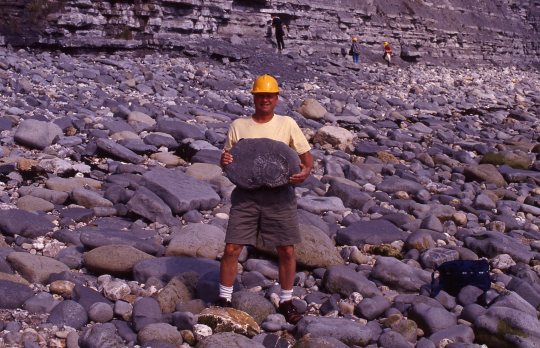
My project was to research the Lyme Regis mollusks i.e., ammonites, nautiloids, and belemnites, update their identification, and review the climate aspects of the Jurassic sea that once covered this part of Europe approximately 199 to 190 million years ago. Paleontologists use marine fossils to interpret past paleoclimates and the paleoenvironments in which the animals once lived. The Jurassic is commonly considered as an interval of sustained warmth without any well-documented glacial deposits at the polar regions. The Lyme Regis fossils are preserved in very discrete layers of limestone strata often named “Lias” by European geologists. The terminology used today is early Jurassic Sinemurian Stage. The fossil mollusks are singular specimen’s that measure approximately 1 inch to 8 inches in diameter. The Carnegie of Natural History collection contains 16 invertebrate specimens from the genera Acanthoteuthis, Asteroceras, Eoderoceras, Liparoceras, Lytoceras, Microderoceras, Nautilus, Radstockiceras, and Xipheroceras.
All Bayet fossils were recorded in the Carnegie Museum Catalog of Fossils. The Cephalopod Catalog contains ammonite, nautiloid, and belemnoid fossils assigned by Bayet and includes details such as collection localities and stratigraphic horizon. Some Lyme Regis specimens are recognized by having two letters “BK” and a painted number, as seen on CM 40666. In 1975, a Swiss paleontologist, Dr. Felix Wiedenmayer, was on a research sabbatical to study fossil sponges at the Carnegie Museum, as well as an expert on Mesozoic ammonites from Europe. He reviewed many Mesozoic ammonites providing updated identification to genus and species, and stratigraphic horizon data, including some of the Lyme Regis ammonite fossils.
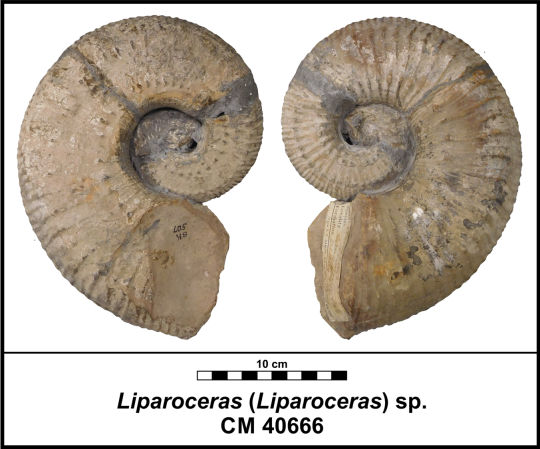
To complete the project, I created a virtual geology, paleontology, and exhibit folder in PowerPoint. This includes photographs of the specimens, a geologic map of Lyme Regis and the Dorset Coast, a Paleogeographic map, the distribution of genus and species in the collection, and references. The photographs in this study were taken by IP Research Associate/volunteer John Harper.
I have had a great experience at the Carnegie Museum of Natural History gaining knowledge about these fossil collections, stratigraphy, and geologic time. Now, I look forward to graduate school in part to study microfossils that lived in the seas during a climate “event” around 56 million years ago during the Paleogene Epoch. This event is called the “Paleocene-Eocene Thermal Maximum” (PETM), and is so named because it demarcates the boundary between these two epochs of geologic time. It has been a pleasure looking at these exceptional cephalopods at the Carnegie Museum, and I look forward to any more potential collaborations in the future.
William Vincett is a research volunteer in the Section of Invertebrate Paleontology and a graduate student at the University of Delaware. Museum employees and volunteers are encouraged to blog about their unique experiences and knowledge gained from working at the museum.
#Carnegie Museum of Natural History#Invertebrate Paleontology#Lyme Regis#Bayet fossils#Carnegie Museum Catalog of Fossils#Fossil#Fossils
132 notes
·
View notes
Text
'Ammonite' Is Historical Fanfiction About the World's First Great Fossil Hunter
https://sciencespies.com/nature/ammonite-is-historical-fanfiction-about-the-worlds-first-great-fossil-hunter/
'Ammonite' Is Historical Fanfiction About the World's First Great Fossil Hunter
Paleontology wouldn’t be the same without Mary Anning. She scoured the dreary coast of southern England for secrets not seen since the Jurassic, fueling the nascent 19th-century field of fossil studies with evidence of strange sea dragons, flying reptiles and other fascinating fragments of life long past. And now, over 170 years after her death, she’s got her own movie.
Ammonite will open at the Toronto Film Festival but isn’t set to premiere in theaters or in homes until later this year, but the historical drama is already stirring the waters like an excitable Plesiosaurus. The first trailer for the film hit the web yesterday. The tale, directed by British filmmaker Francis Lee, follows Anning (Kate Winslet) as she reluctantly brings a young woman named Charlotte Murchison (Saoirse Ronan) along on some fossil-hunting trips in the hope that the vigorous activity will help her new apprentice’s illness. But the two find more than fossils. In Lee’s telling, Anning and Murchison begin an intense affair that seems to have no room to breathe under the cultural strictures of Victorian England.
In other words, this is paleo fanfic.
youtube
The real Anning was an expert fossil collector and paleontologist who combed the beaches of Lyme Regis and the surrounding area for fossils that eroded from the Jurassic rock. You can retrace her steps on the same beaches, as I did during my own visit to England a few years ago, and maybe even find a little golden spiral along the tideline—ancient, shelled relatives of squid called ammonites.
Anning wasn’t alone in her exploits. Fossil hunting was a family business, and Anning’s father, Richard, took Mary and her brother Joseph on excursions to collect ammonites and other pieces they then sold as tourist curios. When Richard died, the rest of the family took over the business. And they were good at it. In 1811, Joseph found the gorgeous skull of an Ichthyosaurus; Mary later collected more bones from the same animal. Of course, that’s to say nothing of the Philpot sisters. Elizabeth, Louise and Margaret Philpot collected fossils in the Lyme Regis area when Anning was still a child, and Elizabeth became a mentor who encouraged her student to understand both the science and the market value of what she found. Even Anning’s dog Tray, a black and white terrier, went along on fossil trips and would stay at specific spots to mark a fossil’s location while the pooch waited for Mary’s return.
Thanks to her discoveries, sketches and notes, Anning eventually became a rock star in her own right. It’s at this point, when she had established her own fossil shop, that Ammonite finds Anning. But while Murchison really was one of Anning’s friends, no evidence suggests that the two had any kind of romantic ties. In fact, no evidence of the paleontologist’s love life—beyond her drive to keep digging into the Blue Lias strata that produced so many bones—exists at all.
Turning Anning’s remarkable story into a torrid romance has already incensed some would-be viewers. Reactions have run the gamut from objections to historical inaccuracy and homophobia, with little resolution given that we’re far too late to ask Anning herself.
In defending his choice, Lee snapped back against the anti-queer underpinnings of the outrage and said he sees Ammonite as another part of his efforts to “continually explore the themes of class, gender, sexuality within my work, treating my truthful characters with utter respect.” Focusing on Anning’s romantic life, even if entirely invented, is a way to see her as a whole person, not just the woman who sells seashells down by the seashore.
I have to wonder what Anning would say to this. As she wrote in a letter, “The world has used me so unkindly, I fear it has made me suspicious of everyone.” In the sexist, male-dominated world of 19th-century science, Anning’s finds were celebrated while she herself was barred from joining academic societies or even finding a path to gain equal footing with the likes of William Buckland, Gideon Mantell and other traditional heroes of paleontology who parasitized her labor. Now, in having her life’s story made a fiction, is the world using Anning again?
In all the hubbub over Ammonite’s portrayal of Anning, commenters have continually missed a critical point. Anning never married, and we don’t know if she had romantic or sexual relationships with anyone. Lee, and some others, have taken this as a hint that Anning may have been a lesbian and hid the fact to avoid controversy. But it’s equally possible that Anning was asexual or uninterested in romance. Perhaps, then, Ammonite is an exercise in erasure wrapped in progressive packaging, ignoring what we know of Anning in an attempt to read between the lines. The truth died when Anning did.
How audiences will experience Ammonite will largely depend on what they bring to it. If they’re expecting a historically accurate biopic, they may sit back on their couch fuming. Ammonite is to paleontology what The Untouchables is to Prohibition or Raiders of the Lost Ark is to archaeology. If viewers are looking for a queer romance set against a wave-battered backdrop, they may feel a little warmer to the treatment.
The sheer pressure put on Ammonite to fulfill our fossiliferous expectations says something about our current moment in science. The accomplishments and importance of women in paleontology are far more prominent than they were in Anning’s time, yet the standard image of a paleontologist remains an Indiana Jones wannabe focused on trophy hunting dinosaurs. And when it comes to diversity within the field across positions—from volunteer and student all the way up to professors—there remains a diversity gap that even cisgendered, straight, white women are fighting against, to say nothing of better support and representation for everyone else who falls outside those narrow categories.
And so we keep turning to Anning as a singular hero, a woman who made amazing and lasting contributions against the odds. She, and the women whose careers were intertwined with hers, deserves to be honored just like the men who fill the introduction sections of paleontology textbooks. At the same time, perhaps we are asking Anning to carry too much—to be the sole representative of an entirely different view of paleontology. If representation for women in the field were better, perhaps it would not feel as if so much is at stake. As it stands, we are so starved for stories other than the Great White Fossil Hunter that it’s almost impossible for any tale to satisfy everyone.
If we’re fortunate, some future paleontologist will be able to point to Ammonite and say it’s the first time they got to see themselves represented. I hope so. For the time being, though, I’m looking forward to the evening when my girlfriend and I can curl up on the couch and watch a romance about warm hearts and cold stone, even if we know Mary Anning’s truth requires a bit more digging to find.
#Nature
1 note
·
View note
Text
Top Tips for G7 Leaders - and Travelers Like Us - to Experience Cornwall

The leaders of the world’s seven biggest democratic economies are meeting in Cornwall, England, and it’s putting the Southwest region of the country under a spotlight.
Maybe you’ve heard of ‘bleisure’ travel? It’s about tacking on a leisure vacation to a business trip. We’re not sure if the leaders of the Western World have the time for a little independent fun and exploration during their packed schedules in Cornwall, but here’s what our friends at Visit Britain suggest they – and you – do on a visit.
Cliffs, Surf, Record-Breaking and Breathtaking Hikes
Coastal Cornwall’s claim to fame (other than things labelled ‘Cornish’, like Cornish hens and Cornish pasties/ meat pies) are related to its dramatic, seaside location: over 300 sandy beaches, coastal villages and resorts, dramatic cliffs and wild moors.
It’s an ideal scenario for outdoor, fresh air activities like hiking, cycling and even surfing that draws surfers and kitesurfers from around the world when the surf’s up.
Take a walk along the newly-opened English Coast Path, which, at 2,795 miles (4,500 km) is
the longest managed and waymarked coastal trail in the world. (Yes, in case you were wondering, it’s longer than other famous long-distance trails like the 2190 mile Appalachian Trail and the 2600 mile Pacific Crest Trail in the U.S.)
The view alone will get your blood racing. Cornwall has 12 “Areas of Outstanding Natural Beauty” from the dramatic cliffs of the North Coast to the beautifully bleak hills of Bodmin Moor.
“Jurassic Park” IRL
It’s the closest you might come to a ‘real life’ dinosaur habitat. Cornwall’s “Jurassic Coast” is an UNESCO World Heritage Site and THE place to go fossil hunting with the dinosaur lovers in your family.
The Jurassic Coast begins in Devon and continues for 95 miles (150 km) to Old Harry Rocks in Dorset. The rock cliffs at Charmouth and Lyme Regis contain thousands of fossils of animals that swam in the Jurassic seas, and each year fossils are eroded from the cliffs and tumble onto the beaches waiting to be discovered.
If you’ve seen the film Ammonite, starring Kate Winslet, it is set in Lyme Regis and tells the story of amateur fossil collector Mary Anning. She and her brother were the first to discover a complete Ichthyosaur skeleton and a complete Plesiosuar. Some of her fossils are at London’s Natural History Museum. Fossil fans can find out more about Anning’s life at the Lyme Regis Museum. The Museum of Jurassic Marine Life is home to some of the first fossils found. The famous Weymouth Bay pliosaur is on exhibition at the Dorset County Museum.
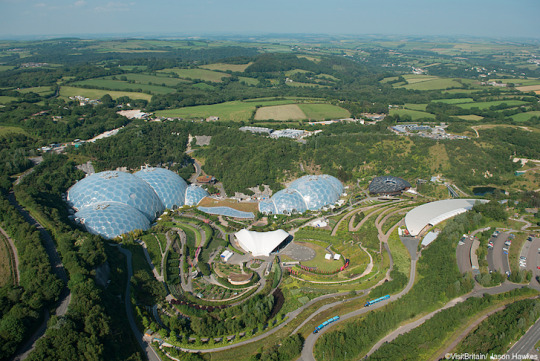
Photo: VisitBritain/ Jason Hawkes
The World’s Largest Indoor Rainforest
On the Southeast coast of Cornwall, a huge crater inside a depleted clay pit has been transformed into the Eden Project. Visitors discover a thriving garden featuring massive Biomes housing the world’s largest rainforest within walls including stunning plants, contemporary gardens and exhibitions. In 2022, it will even get its own hotel on site, a 109-bedroom designer hotel that maximizes accessibility, energy-efficiency and sustainability.
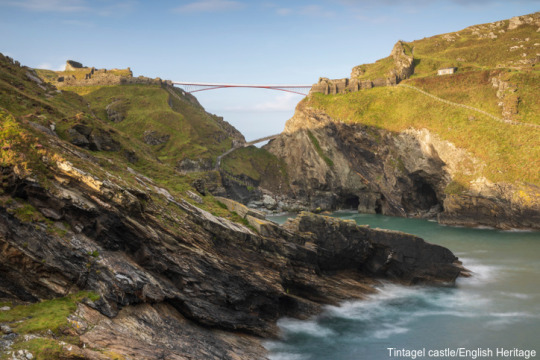
Photo: English Heritage
Legends and Tales
Cornwall’s Tintagel Castle is inextricably linked with the ultimate English tale: the legend of King Arthur. Situated along the dramatic and windswept coastline, the castle ruins echo with stories from centuries ago. Built half on the mainland and half on a jagged headland projecting into the Cornish sea, the startlingly contemporary Tintagel Bridge brings the two impressive sites together in a dramatic way.
Tropical Escapes on British shores
Cornwall’s Isles of Scilly are called England’s own tropical islands, accessible by a 15 minute flight or a ferry ride to what might seem like another world. Only 5 of the 140 islands lying less than 30 miles (45 km) off of Land’s End are inhabited, providing the ultimate in privacy and seclusion to explore crystal clear waters and idyllic beaches.
Those in the know have already discovered the charms of the Isles of Scilly. The Duke and Duchess of Cambridge and their children, Kate Winslet, Jude Law and Dame Judi Dench all holiday there.
Local Flavor
Cornish pasties, or meat pies, are an historic favorite, but they’re no bygone tradition. Visit Britain tells us more than 120 million Cornish pasties are made each year! Add decadent Cornish Cream Teas to your travel menu and don’t forget about the seafood! Coastal Cornwall is the perfect place for fresh-from-the-sea fish and chips, not to mention Fal Oysters and Cornish Sardines.
At at the luxury resort Carbis Bay Hotel near St. Ives (yes, the St. Ives of the poem, “As I was walking to St. Ives…”), spa treatments include hot tubs infused with Cornish seaweed. That’s fresh!
#StartYourTrip
Top Photo: St. Michaels Mount, a historic fortified building on a rocky outcrop in the Marazion bay, off the coast of Cornwall. VisitBritain/ Jason Hawkes
0 notes
Text
Fossil Hunting with Kate Winslet and Saoirse Ronan
You already know Kate Winslet and you’re finally figuring out who the staggeringly talented Saoirse Ronan (Mary Queen of Scots) is, even if you still can’t quite pronounce her name. But soon you’ll get a fresh chance to learn the name Francis Lee, the director whose beautifully queer independent drama, God’s Own Country, won the World Cinema Dramatic Special Jury Award for Directing at Sundance 2017, as well as Best Film at the British Independent Film Awards. He’s got a new movie in the works called Ammonite starring the aforementioned A-listers, and we think it’s poised to be the next contender in the lesbian fave sweepstakes.
youtube
Winslet will star as 19th-century paleontologist Mary Anning (credited with making important scientific discoveries in the Jurassic marine fossil beds along the English Channel), with Ronan as the young woman Anning develops a relationship with during a seaside convalescence. With credits like this in the mix, we’re guessing awards and stuff, and a lot of windswept English natural beauty. It shoots in March, even though we’re sort of ready for it right now. We’ll just make do with watching Carol for the 13th or 23rd time until this one’s ready.
Gregg Araki presents Apocalypse soon
youtube
Veteran indie filmmaker Gregg Araki (Mysterious Skin), pioneer of the New Queer Cinema, has a new series coming to Starz in March. It’s called Now Apocalypse; he co-wrote it with Vogue.com sex columnist Karley Sciortino (Viceland’s Slutever series) and he’s got heavy-hitter co-producers Steven Soderbergh (Logan Lucky) and Gregory Jacobs (Magic Mike XXL) on board. As usual it’s populated by a sexy young cast – Avan Jogia (Twisted), Kelli Berglund (Lab Rats), Beau Mirchoff (The Fosters), and Roxane Mesquida (Kaboom) – and set in a fractured version of Los Angeles where everyone is chasing love, sex, money and fame, until people start having prophetic dreams about dark conspiracies and, well, the apocalypse. Whatever, it’ll be hazily glamorous and there’ll be old Cocteau Twins songs on the soundtrack, right? We’re ready.
from Hotspots! Magazine https://hotspotsmagazine.com/2019/01/23/fossil-hunting-with-kate-winslet-and-saoirse-ronan/
from Hot Spots Magazine https://hotspotsmagazine.tumblr.com/post/182249547115
0 notes
Text
Fossil Hunting with Kate Winslet and Saoirse Ronan
You already know Kate Winslet and you’re finally figuring out who the staggeringly talented Saoirse Ronan (Mary Queen of Scots) is, even if you still can’t quite pronounce her name. But soon you’ll get a fresh chance to learn the name Francis Lee, the director whose beautifully queer independent drama, God’s Own Country, won the World Cinema Dramatic Special Jury Award for Directing at Sundance 2017, as well as Best Film at the British Independent Film Awards. He’s got a new movie in the works called Ammonite starring the aforementioned A-listers, and we think it’s poised to be the next contender in the lesbian fave sweepstakes.
youtube
Winslet will star as 19th-century paleontologist Mary Anning (credited with making important scientific discoveries in the Jurassic marine fossil beds along the English Channel), with Ronan as the young woman Anning develops a relationship with during a seaside convalescence. With credits like this in the mix, we’re guessing awards and stuff, and a lot of windswept English natural beauty. It shoots in March, even though we’re sort of ready for it right now. We’ll just make do with watching Carol for the 13th or 23rd time until this one’s ready.
Gregg Araki presents Apocalypse soon
youtube
Veteran indie filmmaker Gregg Araki (Mysterious Skin), pioneer of the New Queer Cinema, has a new series coming to Starz in March. It’s called Now Apocalypse; he co-wrote it with Vogue.com sex columnist Karley Sciortino (Viceland’s Slutever series) and he’s got heavy-hitter co-producers Steven Soderbergh (Logan Lucky) and Gregory Jacobs (Magic Mike XXL) on board. As usual it’s populated by a sexy young cast – Avan Jogia (Twisted), Kelli Berglund (Lab Rats), Beau Mirchoff (The Fosters), and Roxane Mesquida (Kaboom) – and set in a fractured version of Los Angeles where everyone is chasing love, sex, money and fame, until people start having prophetic dreams about dark conspiracies and, well, the apocalypse. Whatever, it’ll be hazily glamorous and there’ll be old Cocteau Twins songs on the soundtrack, right? We’re ready.
source https://hotspotsmagazine.com/2019/01/23/fossil-hunting-with-kate-winslet-and-saoirse-ronan/
from Hot Spots Magazine https://hotspotsmagazin.blogspot.com/2019/01/fossil-hunting-with-kate-winslet-and.html
0 notes
Text
Fossil Hunting with Kate Winslet and Saoirse Ronan
You already know Kate Winslet and you’re finally figuring out who the staggeringly talented Saoirse Ronan (Mary Queen of Scots) is, even if you still can’t quite pronounce her name. But soon you’ll get a fresh chance to learn the name Francis Lee, the director whose beautifully queer independent drama, God’s Own Country, won the World Cinema Dramatic Special Jury Award for Directing at Sundance 2017, as well as Best Film at the British Independent Film Awards. He’s got a new movie in the works called Ammonite starring the aforementioned A-listers, and we think it’s poised to be the next contender in the lesbian fave sweepstakes.
youtube
Winslet will star as 19th-century paleontologist Mary Anning (credited with making important scientific discoveries in the Jurassic marine fossil beds along the English Channel), with Ronan as the young woman Anning develops a relationship with during a seaside convalescence. With credits like this in the mix, we’re guessing awards and stuff, and a lot of windswept English natural beauty. It shoots in March, even though we’re sort of ready for it right now. We’ll just make do with watching Carol for the 13th or 23rd time until this one’s ready.
Gregg Araki presents Apocalypse soon
youtube
Veteran indie filmmaker Gregg Araki (Mysterious Skin), pioneer of the New Queer Cinema, has a new series coming to Starz in March. It’s called Now Apocalypse; he co-wrote it with Vogue.com sex columnist Karley Sciortino (Viceland’s Slutever series) and he’s got heavy-hitter co-producers Steven Soderbergh (Logan Lucky) and Gregory Jacobs (Magic Mike XXL) on board. As usual it’s populated by a sexy young cast – Avan Jogia (Twisted), Kelli Berglund (Lab Rats), Beau Mirchoff (The Fosters), and Roxane Mesquida (Kaboom) – and set in a fractured version of Los Angeles where everyone is chasing love, sex, money and fame, until people start having prophetic dreams about dark conspiracies and, well, the apocalypse. Whatever, it’ll be hazily glamorous and there’ll be old Cocteau Twins songs on the soundtrack, right? We’re ready.
from Hotspots! Magazine https://hotspotsmagazine.com/2019/01/23/fossil-hunting-with-kate-winslet-and-saoirse-ronan/
0 notes
Text
Why the Jurassic Coast Is One of the Best Fossil-Collecting Sites on Earth
https://sciencespies.com/nature/why-the-jurassic-coast-is-one-of-the-best-fossil-collecting-sites-on-earth/
Why the Jurassic Coast Is One of the Best Fossil-Collecting Sites on Earth
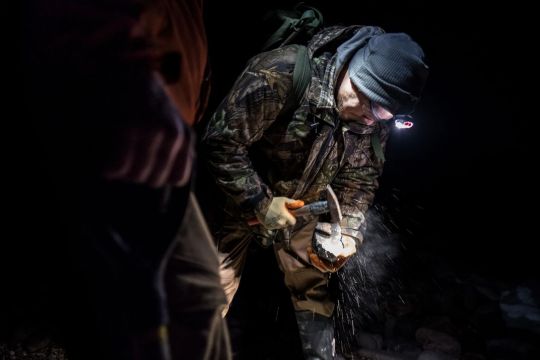
SMITHSONIANMAG.COM |
June 4, 2020, 9:19 a.m.
The narrow blue beam of James Carroll’s head torch sweeps methodically from side to side over the gravel and rocks of Charmouth Beach in the county of Dorset on the south coast of England. It’s early January and at 5:30 p.m. already pitch dark, save for the twinkling lights of the town of Lyme Regis in the distance. Abruptly, Carroll stops, bends down, and picks up a dull gray stone the size of a grapefruit. With practiced ease, he hits it sharply with a rock hammer and the stone splits in two to reveal the perfect spiral of a 190-million-year-old ammonite embedded within.
Around 200 million years ago, this shoreline was entirely submerged by a tropical sea. The area was then around the latitude of Morocco, and its warm water supported a rich marine ecosystem filled with everything from ammonites (marine mollusks with a protective coiled shell) to ferocious 10-meter-long reptiles. Over time, the sea receded and the tectonic plate on which England sits drifted northward, but the sedimentary rocks and clay that formed the ancient seabed remained intact.

Fossil collector and preparer James Carroll uses a hammer to break open a rock on Charmouth Beach, Dorset, England. While some fossils can be found lying in the open, many professional collectors search for better finds hidden in limestone nodules.
(Tommy Trenchard)
With each new storm or high tide, those rocks erode away from the steep coastal cliffs, revealing the spectacular remains of creatures that once swam in the ancient sea. The Jurassic Coast, as the region is called, stretches for 155 kilometers through Dorset and East Devon. It has been a World Heritage Site since 2001 and is renowned as one of the most extraordinary fossil-collecting sites on Earth, offering glimpses into an astounding range of geological epochs.
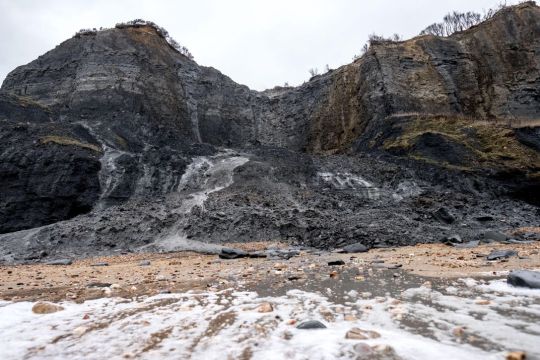
The soft rocks and clay of the Jurassic Coast on the south coast of England release a steady stream of fossils onto the beach with each new high tide or winter storm.
(Tommy Trenchard)
In some parts of the world, all fossils are considered the property of the state, and even where this is not the case, regulations can make it hard for amateur collectors to take part. But on the Jurassic Coast, fossils can be revealed one day and destroyed by pounding waves or swept out to sea the next, meaning that neither landowners nor scientists can hope to save even a fraction. This means the involvement of the general public is key to ensuring the maximum number of fossils are collected for scientific research and public viewing. A progressive collectors’ code formalizes the average person’s ability to gather fossils and has contributed to a massive surge of interest in recent years, further stoked by social media and dinosaur movies.
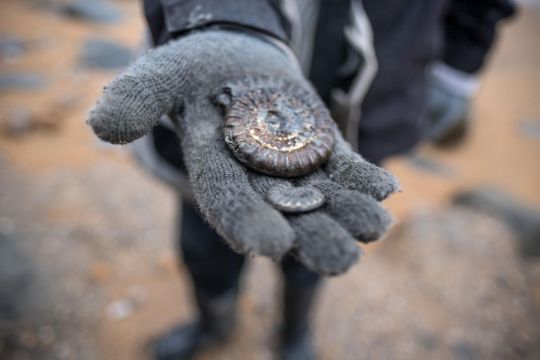
An amateur fossil hunter displays two pyritic ammonites he discovered on Charmouth Beach.
(Tommy Trenchard)
“The most important thing is that we save the fossils,” explains Phil Davidson of the Charmouth Heritage Coast Centre, which was involved in creating the code.
The West Dorset Fossil Collecting Code of Conduct applies to a 17-kilometer stretch of coast between Lyme Regis and the village of Burton Bradstock, and was recently replicated in East Devon. Hammered out in the winter of 1998 by landowners, scientists, collectors, government agencies, and cultural and environmental organizations, the code clarifies ownership and seeks to ensure both that key specimens are preserved for posterity and that collecting happens in a safe and nondestructive manner. Collectors are free to take home small or common fossils but can only keep more significant finds—referred to as category one fossils—after reporting them. A collector who wants to sell a category one fossil has to offer it to museums before private buyers and must report the details of the sale.
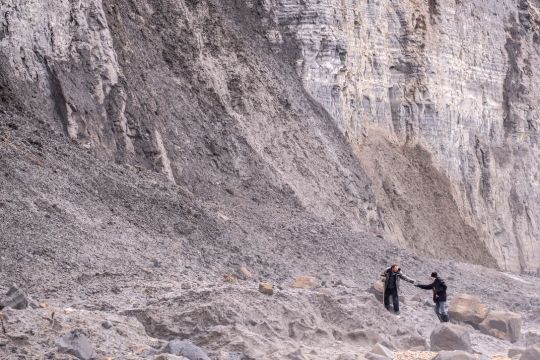
An amateur fossil collector passes a new find to his son as they scour newly exposed sediment from a landslide on Charmouth Beach.
(Tommy Trenchard)
When there isn’t a global health crisis, hundreds of thousands of amateurs and professionals visit the area’s stony beaches each year. The Dorset Fossil Hunters Facebook group has over 2,500 dedicated members who share their finds and help identify new specimens, while enrollment in the paleontology program at the nearby University of Portsmouth has quadrupled since 2000.
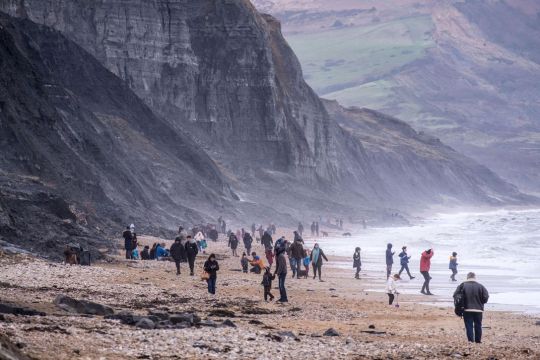
Professional and amateur fossil hunters mingle with tourists on Charmouth Beach, one of the most popular fossil-collecting sites in the United Kingdom.
(Tommy Trenchard)
Every day that the Charmouth Heritage Coast Centre is open, hundreds of people come in with fossils. Between 20 and 30 of the finds turn out to be of scientific interest each year, says Davidson, whose desk is covered with paperwork, cables, and scattered ammonites, under the watchful eye of a stuffed plesiosaurus toy. “Lots are found by professionals … but lots are also found by amateurs, even first-time fossil hunters.”

Carroll works on a piece in his studio-kitchen in Axminster, Devon, England. The work of exposing ancient creatures from surrounding rock takes extreme precision.
(Tommy Trenchard)
To make his point, he gestures at a small but perfectly preserved Pholidophorus fossil embedded in a limestone nodule in a public display case. “This fish was found by a five-year-old girl,” he says. Such fossils are rarely found in such good condition, and the discovery made headlines in national newspapers.
The rise of citizen fossil collecting is a fitting salute to Lyme Regis’s most famous denizen, Mary Anning. By the age of 12, Anning—with her brother’s help—had uncovered one of the world’s first ichthyosaurs. The discovery took place in the early 1800s, before the term dinosaur had even been coined. Anning, whose key role in the development of paleontology in the United Kingdom was largely obscured until long after her death, collected dozens of scientifically important specimens, some of which still take pride of place at museums around the world. In recent years, she has been the subject of several books, and a new film about her life, starring Kate Winslet, is due to be released this year, which may bring a further wave of collectors.
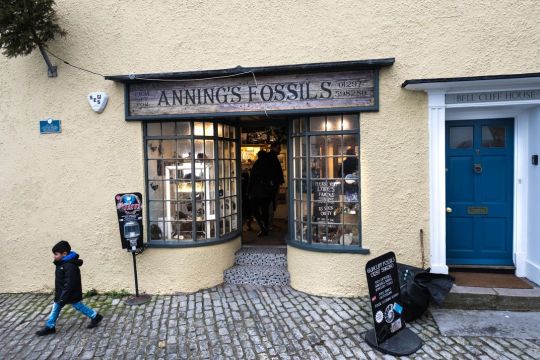
A boy walks out of a fossil and curio shop owned by longtime collector Barry Titchener. The shop was used as the setting for Mary Anning’s fossil business on the set of the upcoming biopic about the Lyme Regis-based fossil collector. Her actual shop was situated just across the street.
(Tommy Trenchard)
On the beach, Carroll examines his find with satisfaction. He has found more ammonites than he can remember, but this one is interesting, set in a wave of crystal within the limestone. He puts it into a heavy canvas backpack and moves on down the beach. Eventually, he’ll use air tools at his studio to chip away excess rock and fully expose the ancient creature inside. He occasionally sells one of his finds, though most of his income is from running tours for amateurs and cleaning up fossils for other collectors; demand for his fossil-preparation service is so high that he estimates it will take him 5,000 hours just to get through his backlog of fossilized lobsters.

People walk along the seafront past streetlights shaped like ammonites in Lyme Regis. The town was the home of Mary Anning, and is one of the most productive areas of England’s Jurassic Coast.
(Tommy Trenchard)
Before long, he crouches again and picks up a stone the size of a matchbox. To an amateur, it looks entirely ordinary. This one, he explains, contains the fossilized remains of an insect. On the rock’s surface, a barely visible fleck of light gray—an extremity of the ancient creature—is the only giveaway.
“When you look at it in your hand and say … I’m the first person ever to see it, it’s pretty cool,” says Carroll.
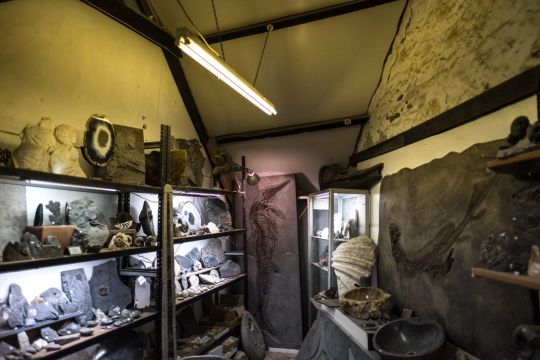
Fossils, including an ichthyosaur (center) and a shark (right), on display in a shop owned by veteran collector Chris Moore in Charmouth, Dorset.
(Tommy Trenchard)
The growing number of visitors to the Jurassic Coast has led to some healthy competition. With so many collectors scouring the beach, ammonites and other popular fossils get snapped up quickly, encouraging many regulars to seek out new and overlooked types of fossils, such as insects and fish, many of which turn out to be new to science.
More and more people are starting to make a living from fossil collecting, selling their finds to local shops, high-end London stores, or private collectors, or putting them up for auction, where a well-preserved ichthyosaur can sell for hundreds of thousands of dollars. For Carroll, however, and others like him, the business element is no more than an unfortunate necessity. It’s the electric thrill of opening a rock and seeing 200 million years back in time that he finds motivating. He rhapsodizes about how, after hundreds of millions of years, you can look through a microscope and still see the individual hairs, no more than eight hundredths of a millimeter wide, on the wings of some prehistoric fly. And above all, with no two fossils ever being quite the same, he dreams about what may be emerging from the cliffs at this very moment.
“What else haven’t we found out there?” he asks. “It gives me goosebumps!”
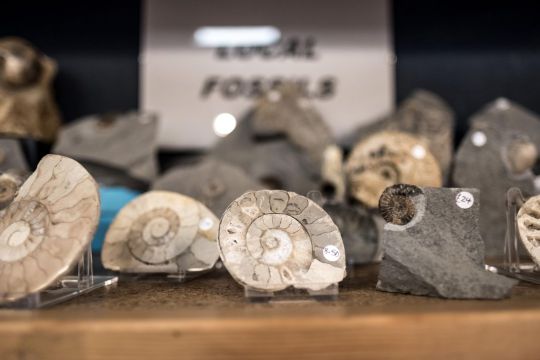
Locally found ammonites are displayed for sale in a Lyme Regis fossil shop.
(Tommy Trenchard)
This article is from Hakai Magazine, an online publication about science and society in coastal ecosystems. Read more stories like this at hakaimagazine.com.
Related stories from Hakai Magazine:
#Nature
0 notes